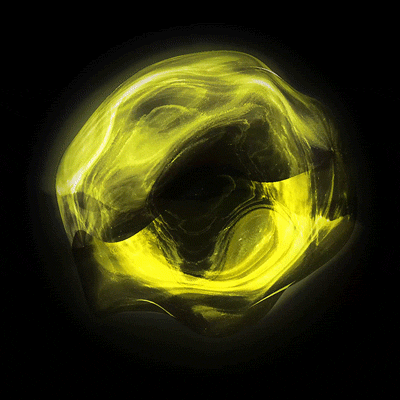
Remember how back in 2017, one of the hottest topics in marketing was Brand Safety. Driven by consumer criticism and activism from the likes of Sleeping Giants, brands were facing backlash for where their ads were running, and ultimately the content that their media dollars were funding.
The way Sleeping Giants worked was simple. They’d visit a website that had hateful content, screen capture the ads that were appearing on them, and tweet them to the brand asking why they were paying for such hateful, or harmful content.
In response, brands like Disney, Nestle and McDonalds were pausing their Google Ads. Until Google could promise them that their ads wouldn’t fund anything that sounded like hate speech, they weren’t willing to spend with them. The Sleeping Giants strategy worked too. They cut Breitbart’s advertising revenue by 90%.
But that was then, six years ago. We’re not hearing so much about it anymore. Sure, brands like Disney still advocate for content moderation (their high-profile boycotting of X is a good example), but the general interest in Brand Safety seems to have subsided.
I’ve noticed this at AFFINITY. Clients used to ask us “how do you manage Brand Safety?” all the time. Recently that has mostly only come from procurement, and not marketeers.
Why the reduced interest in Brand Safety?
We have a few hypotheses. Firstly, the industry has become comfortable with the protections that are now available. Following the backlash in 2017, Google launched additional controls and default settings for excluding sensitive content topics. Alongside this, third-party ad verification platforms like IAS, Moat and DoubleVerify gained popularity, promising their users a product that kept Brand Safety in mind.
Additionally, the even hotter topic of recent years ‘privacy’ has taught the average consumer how digital advertising actually works. While a brand’s unfortunate advertising placement is still met with a degree of schadenfreude, the sentiment has largely shifted from ‘blame of the advertiser’ to blame the ad networks, and even the users themselves for viewing that questionable content. This shift has lowered the stakes for marketing teams when it comes to ads appearing in less desirable locations.
Lastly, the conversation has evolved. Focus has shifted to discussions on Ad Fraud and Transparency, and rightly so. ANA conducted a study between 2020-2023, which concluded there is an industry opportunity for $22billion in efficiency gains. 35% of that coming from media productivity improvements when addressing non viewable/measurable impressions, Made for Advertising (MFA) and Invalid Traffic (IVT) – full definitions at the bottom of this article.
Should we still be concerned?
Yes. But no more than before.
Whether its Brand Safety or manipulative tactics, it all comes back to the same thing: Media Quality. We want our marketing dollars to go towards maximising favourability and attention of human eyes, not bots or diluted by content with poor perception, low quality, or clutter. Rather than be concerned, it’s an occasion to be optimistic, a 35% improvement in media productivity is a fantastic opportunity.
The industry is wising up, IAS launched protection against MFA in October 2023, which is a step in the right direction. However, with third party verification tools like IAS also only reporting Ad Fraud rates of 1.39%, there is still likely a massive under reporting of the issue. This is perhaps unsurprising considering much of the industry, including third party ad verification tools, are still often incentivised and priced based on volume.
Testing our own tools internally at AFFINITY we have often seen bot traffic alone accounts for 8%+ of impressions. Whilst combined with MFA and IVT we’ve not seen quite as high as the 35% opportunity reported by the ANA, it’s clear that without the right measures in place a lot more poor-quality inventory goes unreported and unprotected against.
This makes it clear that there is still some way for the industry to go, and similar to 2017 it likely requires some pressure to accelerate.
So, what can marketers do?
Embrace the opportunity to improve digital advertising and contribute to progression of the industry down the right path.
Avoid talking about Brand Safety, Ad Fraud and Transparency as independent or evolutionary concerns, it’ll only leave room for something else undesirable to replace them.
Ask the question: What do you do to ensure Media Quality?” It’ll set clear expectations for what needs to be delivered and that anything adversary (current or future) needs to be quelled.
Ask media partners how they are holding themselves accountable for preventing bad actors in their supply chains and how they go about nurturing high quality content.
Ask agencies how they are also holding media partners to account, and how they are identifying and protecting activity against poor quality inventory, practices and placements.
Definitions:
Made for Advertising (MFA) - web content or digital assets specifically created for the purpose of generating advertising revenue. This content is often designed to maximise ad impressions rather than providing valuable information or entertainment to users.
Invalid Traffic (IVT) - encompasses interactions with digital ads that are not genuine or legitimate. This can include fraudulent clicks, impressions, or actions generated by automated bots, scripts, or other non-human means.
Non-Viewable - ad impressions served outside of human visible areas of a web page or app.
Non-Measurable – ad impressions that cannot be accurately tracked, recorded or measured. This may exist due to technical or nefarious reasons.








